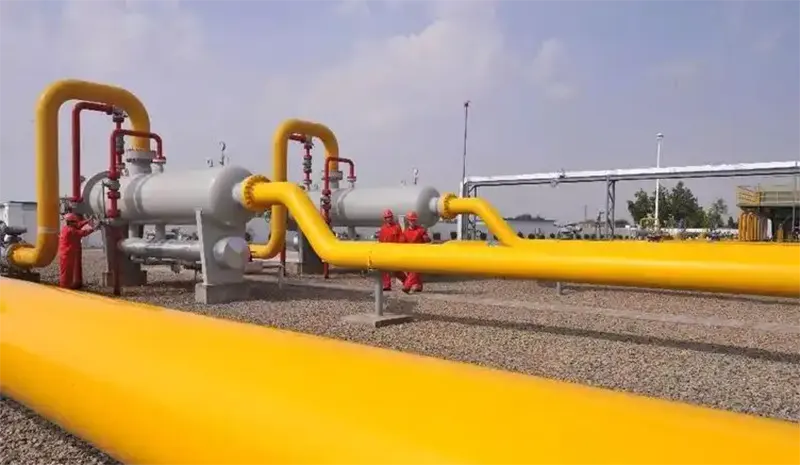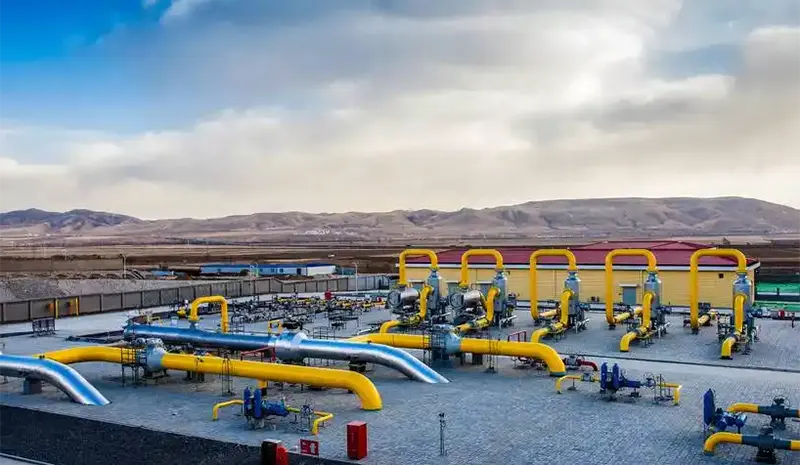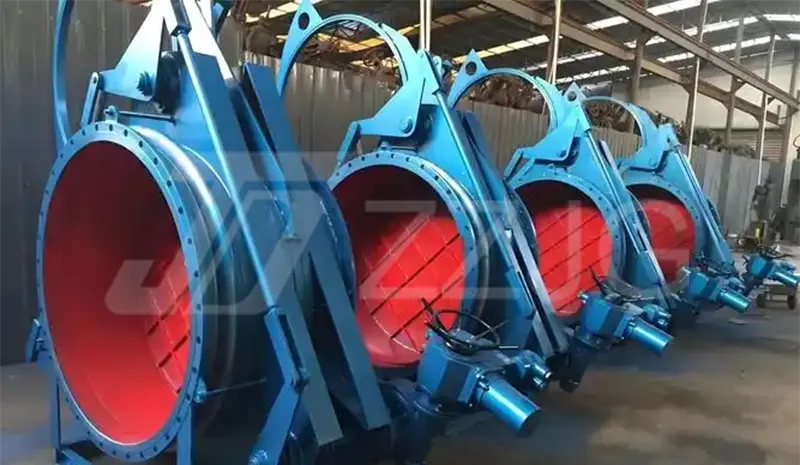The application of blind valve in gas line piping is mainly as a reliable isolation device for realizing the physical cut-off of piping during maintenance, overhaul or emergency. Its unique design and function make it play an important role in the natural gas transportation system, the following are its specific application scenarios and features:

1.Main function and working principle
1.1 Gas piping blind valve structure features: blind valve consists of a valve body and a rotatable “spectacle plate”, which usually contains a through hole and a solid blind plate. By rotating the position of the plate, you can choose to let the medium flow or completely block.
1.2 Gas piping blind valves can be completely isolated: the blind plate is inserted to form a physical barrier, realizing zero leakage isolation, especially suitable for high-pressure, flammable natural gas environment.
2.Main Application Scenarios
2.1 Safe maintenance of natural gas piping with blind valves: during pipeline maintenance or equipment replacement, blind valves can isolate specific pipeline segments from the system to ensure that there is no residual gas in the operation area and safeguard personnel safety.

2.2 Equipment connection and isolation
If the compressor, filter and other equipments need to be dismantled, the blind valve can cut off the natural gas flow, avoiding the overall shutdown of the system. In the multi-branch system, the blind valve can be used to switch the gas supply path to improve the flexibility of the system.
2.3 Emergency Cutoff
Leakage control: When pipeline leakage or fire is detected, quick closing of the blind valve can stop the further flow of natural gas and reduce the risk of accidents.
2.4 Long-term Sequestration
Out-of-service pipe section sealing: For pipelines not in use for a while, inserting the blind can seal them for a long time to avoid the risk of internal leakage of the valve.
3.Advantage analysis
3.1 Zero-leakage security: blind physical isolation, no hidden risk of internal leakage, suitable for natural gas and other high-risk media.
3.2 High-pressure and corrosion resistance: usually made of cast steel, stainless steel and other materials to adapt to high pressure (such as Class 600 or more) and natural gas containing hydrogen sulfide environment.
3.3 Operational reliability: manual or hydraulic drive, simple structure, low failure rate, suitable for critical isolation points.
3.4 Low maintenance cost: no complex sealing structure, long-term use without frequent maintenance.

4.Precautions for use
4.1 Relieve the pressure and make sure there is no residual gas in the pipeline before operation to prevent danger caused by operation under pressure.
4.2 Clearly identify the blind status (“on” or “off”) to avoid misoperation.
4.3 Install the blind plate in a location where it can be easily operated, and leave the space required for rotating the plate.
4.4 Ensure that the gasket material is resistant to gas corrosion (e.g. graphite gasket) when connecting to the flange.
4.5 Check the blind plate and sealing surface for corrosion and deformation to ensure isolation effectiveness.
4.6 Lubricate the rotating parts to prevent jamming.
5.Differences with ball valves and gate valves
Ball valves and gate valves rely on sealing surface closure and may have trace leakage, whereas blind valves are physically blocked for greater safety.
Blind valves are not suitable for frequent switching and are mainly used for long-term or critical isolation; gate/ball valves are more suitable for regulating flow or regular opening and closing.
6.Industry Standards and Suggestions for Selection
Follow the standards: the design should comply with API 590, ASME B16.48 and other specifications to ensure the pressure capacity and material suitability.
Selection points: according to the pipeline pressure, temperature, media composition (such as sulfur content) to choose the material, consider the mode of operation (manual, hydraulic drive) and installation space limitations.

Blind valves are indispensable safety isolation devices in gas pipelines, especially for scenarios that require absolutely reliable cut-off. Their use significantly improves system maintenance safety, operational flexibility and emergency response capabilities, but they require strict adherence to operating practices and maintenance procedures for optimal performance. In the high-pressure, high-risk gas transmission field, blind valves can be used in conjunction with conventional valves to build a multi-layered safety protection system.
DO YOU HAVE QUESTIONS? WE ARE HERE TO HELP YOU!